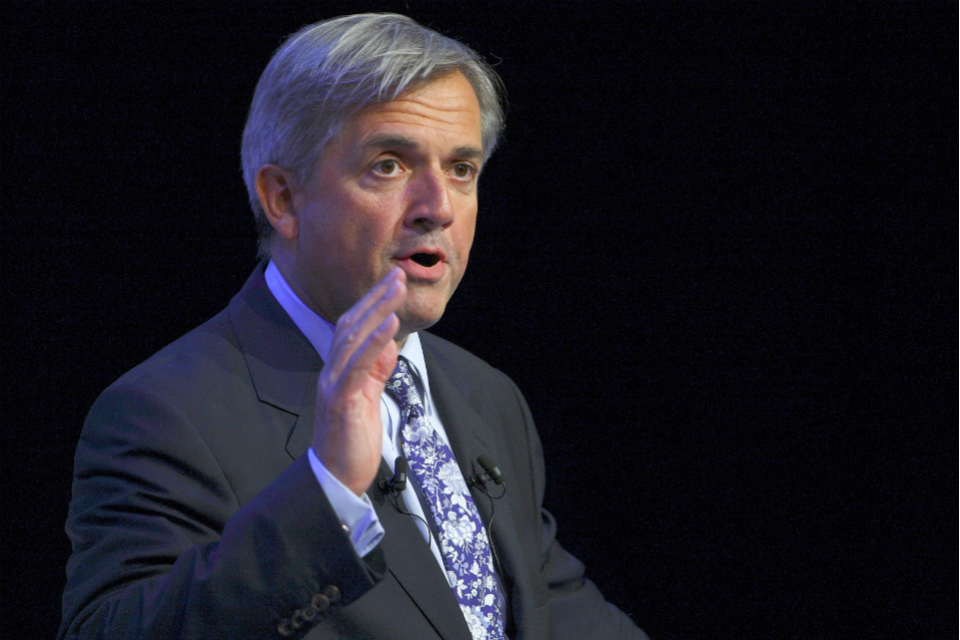The Rt Hon Chris Huhne MP's speech to the Passivhaus Conference
Thanks very much. It’s my great pleasure to be here this evening at the first UK Passivhaus conference. And to meet people united by a passion…

Thanks very much. It’s my great pleasure to be here this evening at the first UK Passivhaus conference. And to meet people united by a passion for improving the energy efficiency of our buildings.
It is a passion that serves a very real purpose. A quarter of UK emissions come from the home. Another 15% comes from public and commercial buildings.
One in ten business and public buildings scores a G-rating for energy performance; that’s right at the bottom of the class. Less than one in a hundred has an A-rating.
To meet our ambitious emissions targets, we must radically change the way we use energy in our homes and workplaces.
Saving energy is the cheapest way of closing the gap between supply and demand. And energy efficiency is at the heart of the Government’s programme.
It’s good for the environment, cutting carbon emissions.
It’s good for energy security, reducing our reliance on imported fossil fuels.
And it’s good for hard pressed families, who are wasting money heating inefficient homes.
This principle is at the core of the Passivhaus ethos. In its modern application of ancient principles, the Passivhaus standard represent a watershed moment in our relationship with the built environment.
For much of our history, housing was about conquering the elements; imposing ourselves on the environment in search of comfort.
Passivhaus is a fundamental re-imagining of our relationship with the outdoors.
Rather than seeking to subvert nature and bend it to our will, we can enter into a symbiotic agreement.
Using the forces of nature to drive us toward a greener future.
I would like to see every new home in the UK reach the Passivhaus standard - and there are some beautiful examples on display tonight. We are making progress.
We will ensure that all new homes post-2016 can be zero-carbon, without letting the costs of new build stop the sustainable development we need.
And we will introduce a minimum standard for fabric energy efficiency, based on the recent consultation on the Code for Sustainable Homes.
This will help us to break away from the model of homes being developed at low cost, but which are expensive to run. Moving toward a new concept of value in home ownership.
I also notice that, in Germany, construction costs of the Passivhaus have tumbled with scale.
We need a new paradigm in housing. Where value is measured in the running costs to 2050 and beyond. Where we look at total cost - construction cost and running cost.
The answer is create a new focus on the installation of low carbon measures, which consumers understand and value - and which will reduce the cost of owning a new home.
We also need to make homes that have already been built more energy efficient.
The Technology Strategy Board’s ‘Retrofit for the Future’ Competition is providing some fantastic examples of what is technically possible. Even in the UK, with some of Europe’s oldest housing stock, the Passivhaus standard can be achieved.
But it also highlights the cost and disruption, as houses are stripped to their bare bones before efficiency measures are installed.
The biggest challenge we face in retrofitting is not just getting householders on board, but having a credible answer when the going gets tough. When cost or inconvenience is a real barrier to improvement.
At the heart of the Energy bill which we will be introducing later this year will be the Green Deal: a radical programme backed by a completely new finance mechanism.
In times of rising bills and tight family budgets, one of the major barriers to energy improvement is the upfront cost.
The Green Deal will provide a straightforward way for people to find out about energy efficiency measures, finance the work and feel the benefits.
It will offer households the chance to improve their homes without covering all the upfront costs, with the option to repay through savings on the energy bills of them and their successors in the home.
It’s designed to work on a national scale, in the average home. But will also help those who want to fund more ambitious efficiency measures.
And the new Energy Company Obligation will provide additional funding for the vulnerable fuel poor and those in hard to treat homes who may need additional support.
The Green Deal will be underpinned by a strong framework of standards and accreditation - for assessors and installers. Eligible energy efficient measures will be focussed on the building fabric, and will have to be installed to the highest standard.
Using only accredited products, and materials which meet strict performance and safety criteria.
Passivhaus has already overcome many of these hurdles. As we seek to roll out the biggest ever programme of domestic energy improvements, it’s vital that we learn the lessons from other successful schemes. Because the Green Deal will open up the market to lots of people who might not otherwise be interested in home improvements, we have to make sure the accreditation and structures are nailed down, so that the improvements are effective - and cost-effective.
This Coalition is committed to making the UK a leader in energy efficiency. We are committed to a new level of ambition; at a scale never attempted before.
The history of the home is about design and technology bettering comfort and improving efficiency.
From the earliest stone houses - complete with smokeholes - to the grandest Georgian terraces, the heating and lighting of homes had a profound impact on their design.
Now, we have a chance to reverse the trend.
By changing the way we think about our energy use, we can let efficiency in the home drive down demand on a national scale - cutting carbon, saving energy, and saving the planet.
Thank you very much.